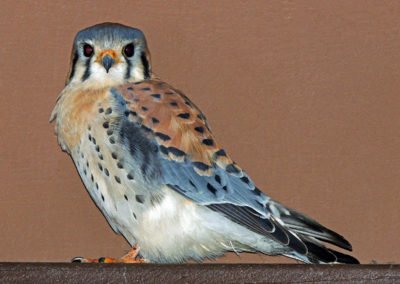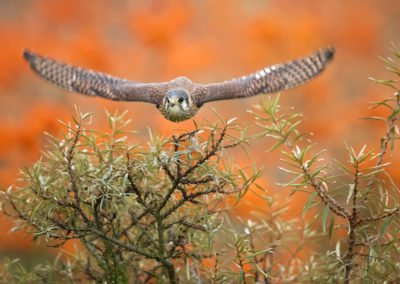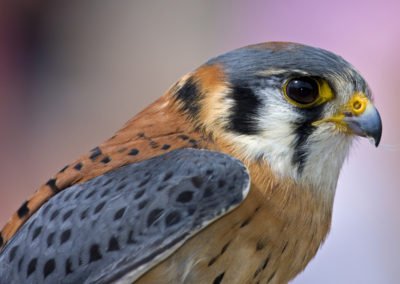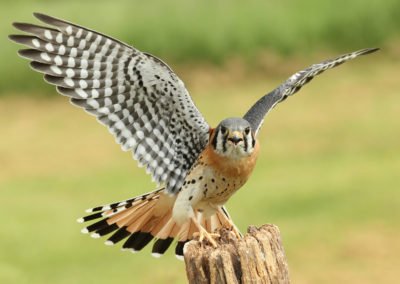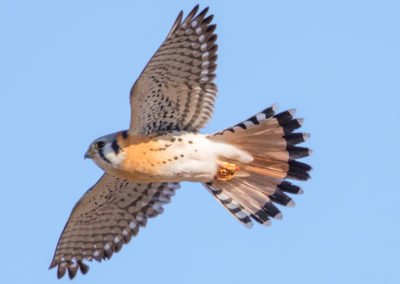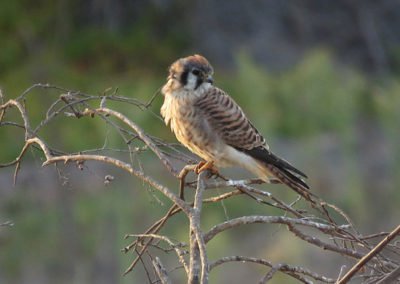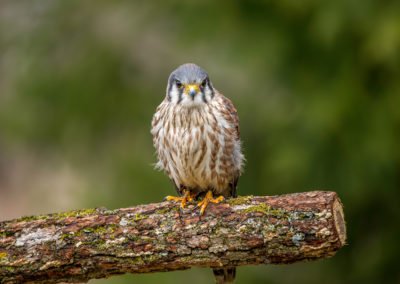For More Information
American Kestrel. Hawkwatch International.
America’s smallest falcon is getting smaller. March 31, 2019. All About Birds.
The American Kestrel’s mysterious decline. August 21, 2018. Golden Gate Audubon Society.
American Kestrel
Falco sparverius
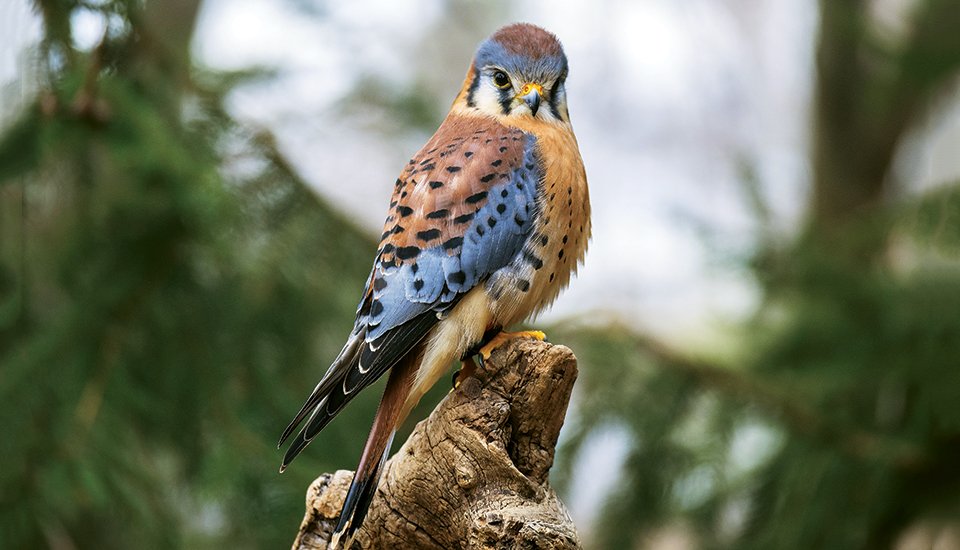
Adult male American Kestrel.
Tony Moran, Shutterstock.
Urban History
American Kestrel, once known as the
The North American kestrel population has dropped by half in the last 50 years. Kestrels are listed as endangered or threatened in four states and as a species of concern in 21 states. Causes of their decline are not well understood. Possibilities include loss of habitat and prey, exposure to pesticides, climate change, and increased predation by larger hawks.
